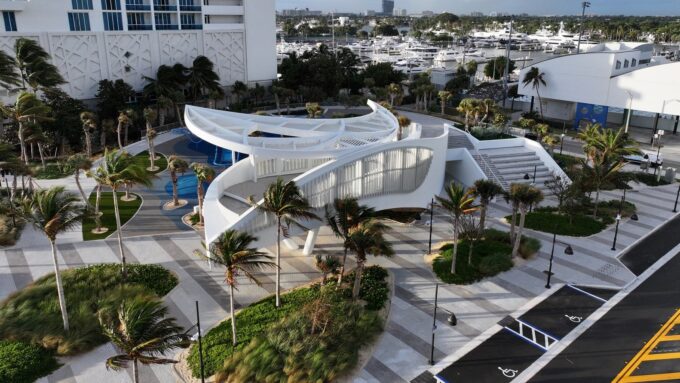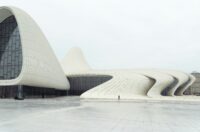- Home
- Articles
- Architectural Portfolio
- Architectral Presentation
- Inspirational Stories
- Architecture News
- Visualization
- BIM Industry
- Facade Design
- Parametric Design
- Career
- Landscape Architecture
- Construction
- Artificial Intelligence
- Sketching
- Design Softwares
- Diagrams
- Writing
- Architectural Tips
- Sustainability
- Courses
- Concept
- Technology
- History & Heritage
- Future of Architecture
- Guides & How-To
- Art & Culture
- Projects
- Interior Design
- Competitions
- Jobs
- Store
- Tools
- More
- Home
- Articles
- Architectural Portfolio
- Architectral Presentation
- Inspirational Stories
- Architecture News
- Visualization
- BIM Industry
- Facade Design
- Parametric Design
- Career
- Landscape Architecture
- Construction
- Artificial Intelligence
- Sketching
- Design Softwares
- Diagrams
- Writing
- Architectural Tips
- Sustainability
- Courses
- Concept
- Technology
- History & Heritage
- Future of Architecture
- Guides & How-To
- Art & Culture
- Projects
- Interior Design
- Competitions
- Jobs
- Store
- Tools
- More
How Architectural Design Transforms Public Spaces into Vibrant Community Hubs
Discover how architectural design transforms public spaces into vibrant, inclusive hubs of community life. Explore innovative principles, inspiring examples, and emerging trends that prioritize functionality, aesthetics, and sustainability. Learn how thoughtful design fosters interaction, cultural expression, and resilience while addressing challenges and shaping future-ready spaces worldwide.

Public spaces are the heart of our communities, where connections are made and cultures thrive. But have we ever stopped to think about how much their design shapes our experiences? Architectural design isn’t just about aesthetics; it’s about functionality, inclusivity, and creating environments that inspire us to gather, explore, and engage.
When done right, thoughtful design can turn an ordinary park, plaza, or street into a vibrant hub of activity. It influences how we interact with the space and even with each other. From innovative layouts to sustainable materials, architecture has the power to transform public spaces into places that truly serve us all.

Table of Contents
ToggleThe Role Of Architectural Design In Public Spaces
Architectural design defines the character, accessibility, and functionality of public spaces. It integrates structural elements, landscape features, and user needs to create environments that promote engagement and purpose.
- Enhancing Usability: Effective architectural design ensures public spaces cater to diverse activities. Features like seating areas, open layouts, and interactive installations (e.g., water features or playgrounds) increase accessibility and usability for people of all ages and abilities.
- Fostering Community Interaction: Carefully planned spaces encourage social connectivity. Community plazas, amphitheaters, and shared gardens facilitate gatherings and interactions, making public areas hubs for cultural and social exchange.
- Improving Aesthetics: Architecture shapes visual appeal by balancing form and function. Incorporating elements like natural light, sustainable materials, and artistic designs enhances the ambiance and encourages people to spend time in these spaces.
- Addressing Inclusivity: Inclusive designs accommodate everyone. Features such as ramps, tactile paths, and multilingual signage remove barriers and ensure spaces are welcoming to all users.
- Sustainability Integration: Architectural design incorporates eco-friendly elements. Green roofs, permeable pavements, and energy-efficient systems minimize environmental impact while promoting long-term sustainability.
Architectural design transforms public spaces into dynamic environments that reflect the identity, culture, and priorities of a community.
Key Principles Of Transformative Design
Architectural design reshapes public spaces by integrating core principles that enhance usability, aesthetics, and sustainability. These principles address diverse needs and foster environments that benefit entire communities.
Functionality And Inclusivity
Design prioritizes accessibility to ensure that public spaces serve users of all abilities. Features like ramps, wide pathways, and clear signage cater to diverse needs. Functional layouts support various activities, from gatherings to quiet reflection, creating versatile environments. For example, seating configurations can promote social interaction or solitude. Inclusivity extends to cultural and social considerations, integrating design elements that reflect community values.
Aesthetic Appeal And Cultural Identity
Public spaces gain meaning when aesthetics align with local heritage and identity. Architectural styles, materials, and colors reflect cultural uniqueness. For instance, sculptures or murals inspired by regional traditions connect users to their environment. Balancing bold design with practicality ensures that aesthetics enhance the usability of spaces. Visual appeal transforms ordinary areas into iconic landmarks, fostering pride and attachment.
Environmental Sustainability
Sustainable design minimizes ecological impacts while enhancing urban areas. Strategies include incorporating green roofs, native vegetation, and permeable surfaces for improved stormwater management. Energy-efficient lighting and renewable materials reduce environmental costs. For instance, solar-powered installations or recycled materials demonstrate innovation and responsibility. Sustainability aligns public spaces with broader environmental goals, ensuring lasting value for future generations.

Notable Examples Of Transformative Architecture
Transformative architecture has reshaped public spaces worldwide, turning them into functional, inclusive, and dynamic environments. From reimagined parks to urban plazas and pioneering public structures, these examples highlight the vital role of design in enhancing community spaces.
Parks And Green Spaces
Architectural design has revitalized parks, blending natural elements with human-centered features. The High Line in New York City demonstrates this integration by repurposing an abandoned rail line into an elevated urban park with green pathways, seating, and art installations. Millennium Park in Chicago combines landscape architecture with design elements like the iconic Cloud Gate sculpture and Crown Fountain to create an interactive cultural space. These transformations show how thoughtful design fosters recreation, exploration, and cultural exchange in green spaces.
Urban Plazas And Squares
Architects have redefined urban plazas to promote social interaction and connectivity. Federation Square in Melbourne stands out with its modernist design using unique facades and open, multi-use spaces that host events and gatherings. Pioneer Courthouse Square in Portland illustrates how a public plaza can serve as the city’s “living room” by incorporating amphitheater-style seating, public art, and flexible areas for community activities. Transformative designs ensure that urban squares become lively hubs for residents and visitors.
Innovative Public Buildings
Public buildings with innovative designs redefine how communities engage with spaces. The Oslo Opera House uses its sloped roof as an interactive public terrace, seamlessly linking architecture and the surrounding landscape. The Centre Pompidou in Paris set a precedent for architectural creativity through its transparent design and external structural framework, increasing accessibility and openness. These structures exemplify how architecture can transform not only the functionality of public buildings but also their contribution to community life.

Challenges In Transforming Public Spaces With Design
Architectural design faces several challenges when aiming to transform public spaces. These obstacles often complicate the process of creating inclusive, functional, and sustainable environments.
Budget And Resource Constraints
Limited budgets frequently restrict the scope and quality of public space projects. Allocating funds for essential infrastructure, maintenance, and innovative elements like energy-efficient lighting or interactive installations becomes difficult with constrained financial resources. For example, small towns or underfunded municipalities often struggle to secure adequate investment for comprehensive redesigns. Additionally, material and labor costs can fluctuate, preventing projects from meeting initial design specifications.
Efficient resource management is necessary to address financial limitations. Strategies like prioritizing multipurpose spaces and adopting cost-effective construction materials, such as prefabricated panels, can reduce expenses without compromising quality. Public-private partnerships also help secure additional funding for large-scale transformation efforts.
Balancing Tradition And Modernity
Preserving cultural identity while introducing modern architectural elements is a recurring challenge. Communities value features reflecting their history, yet innovative designs often incorporate contemporary aesthetics or technologies. For instance, integrating cutting-edge materials like glass facades in areas with traditional stone architecture may lead to resistance from local stakeholders.
Creating harmony requires thoughtful planning. Blending modern design elements, such as minimalist furniture or sustainable materials, with local heritage ensures spaces resonate with diverse user groups. Engaging community members during the design process promotes solutions that honor traditions while fostering progress. This balance reinforces public spaces as both culturally rich and forward-thinking environments.

The Future Of Architectural Design In Public Spaces
Emerging trends in architectural design for public spaces emphasize innovation, sustainability, and user-centric approaches. These designs integrate cutting-edge technology, such as smart infrastructure and interactive elements, to enhance user experience and efficiency. For example, responsive installations that adapt to environmental conditions or real-time data provide greater functionality and engagement.
Sustainability continues to shape the future of public space design, with green architecture becoming a standard rather than an option. Materials with low environmental impact, renewable energy systems, and urban greening initiatives like vertical gardens and green corridors dominate future-oriented planning. Such designs not only reduce ecological footprints but also improve air quality and urban biodiversity.
Inclusivity gains prominence as architects prioritize accessible and equitable spaces. Universal design principles drive the creation of environments that eliminate physical and social barriers, ensuring effective usage for individuals of all abilities. For instance, multifunctional spaces and adaptive layouts accommodate diverse community needs while fostering social equality.
Climate resilience is increasingly incorporated into public space design to address environmental volatility. Flood-resistant landscaping, heat-absorbing materials, and energy-efficient structures prepare public spaces for extreme weather events. This foresight enhances safety and long-term usability while promoting sustainability.
Technological integration redefines interaction with public spaces. Augmented reality (AR) features, interactive wayfinding systems, and IoT-enabled smart furniture contribute to immersive experiences. These innovations transform how users navigate and connect with their environment.
Flexible and adaptable designs address evolving urban needs. Spaces designed for multipurpose use, such as plazas that host events or adapt to seasonal activities, offer long-term functionality. This approach ensures relevance as urban areas grow and community requirements shift.
Conclusion
Architectural design holds a transformative power in reimagining public spaces to serve communities effectively. By integrating functionality, inclusivity, and sustainability, designers create environments that foster engagement, interaction, and cultural expression. From revitalized parks to dynamic urban plazas, thoughtfully planned spaces enhance usability while prioritizing aesthetic appeal and accessibility.
Overcoming challenges like budget constraints and preserving cultural identity demonstrates the adaptability and innovation inherent in architectural design. Modern trends, such as smart technologies and climate-resilient features, ensure public spaces remain relevant and future-ready. Through user-focused strategies and eco-conscious practices, these spaces evolve into vibrant hubs that reflect and support community priorities.
- community connection design
- community engagement spaces
- community-building spaces
- community-centered urban design.
- community-focused design
- creating community spaces
- design for community interaction
- design tips for public areas
- designing public spaces
- inclusive public space design
- placemaking strategies
- Public Space Design
- public space planning guidelines
- public spaces architecture
- social spaces design
- successful public spaces
- urban design tips
- urban planning and design
Submit your architectural projects
Follow these steps for submission your project. Submission FormLatest Posts
Enhancing Urban Life: Best Practices for the Design of Walkways in Urban Areas
Discover the transformative role of urban walkway design in creating safer, sustainable,...
Playgrounds: Landscape Architecture for Inviting Interaction
Playgrounds in landscape architecture are more than spaces for activity—they are environments...
Future Trends in Urban Development: Embracing Sustainability and Smart Technology
Explore the future of urban development in this insightful article that highlights...
Understanding Having an Architectural Perception in Public Spaces for Better Community Engagement
Explore the transformative power of architectural perception in public spaces. This article...












Leave a comment